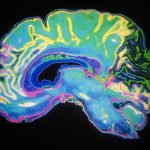Fibromyalgia: Proper Diagnosis is Half the Cure!
David M. Brady, ND, DC, CCN, DACBN
So your patient says she has fibromyalgia (FM) and was told that there is no known cause or cure. The best her family physician can do is suggest she take some prescription medications and learn to live with the pain. Should she, and you, accept this diagnosis and prognosis?
Before we answer that question, read a few real-life stories from these patients below:
- “I was diagnosed with fibromyalgia, and suffered with widespread pain, fatigue, and inability to lose weight. After 2 years of unsuccessfully trying different pain and antidepressant medications, I finally got a second opinion and was diagnosed with a previously undetected thyroid problem. My fibromyalgia pain went away completely after I was put on thyroid hormone replacement.”
- “I suffered with terrible fatigue and achiness throughout my body, but especially in my legs. My doctor told me I had fibromyalgia and gave me an antidepressant. At the same time, one of my best friends told me she had the same symptoms, but that her pain turned out to be related to her cholesterol medication. I asked my doctor about this and he took me off my statin drug, and within 2 months my fibromyalgia pain went away.”
- “I suffered with pain in multiple joints, and my doctor checked for rheumatoid arthritis, which was negative. I was told I had fibromyalgia and was put on pain medications. After a few months I went to a rheumatologist who ran new blood tests and found I had inflammation somewhere in my body. More blood tests with my naturopath confirmed that I had Lyme disease. I was put on an antibiotic protocol and my pain went away completely.”
- “I was diagnosed with fibromyalgia after my family doctor ran numerous blood tests and could not find any medical problem that could explain my severe fatigue and widespread pain. I did notice that my symptoms got much worse around the time that my husband was diagnosed with prostate cancer. I was not sleeping through the night and started to develop panic attacks. My doctor recommended that I take a muscle relaxant before bedtime to improve my sleep, and a low-dose antidepressant to help reduce my anxiety. In addition, I decided to take some yoga classes and cut back on the amount of coffee that I was drinking, both of which seemed to help reduce my stress levels. Now my fibromyalgia pain is greatly reduced and I am starting to feel normal again.”
Each of these stories had a happy ending. Why? Because the doctor eventually figured out what was causing symptoms that were labeled – correctly or incorrectly – as fibromyalgia. Proper diagnosis is half the cure, as they say. If the diagnosis is not correct, how can the treatment be correct?
Proper Diagnosis Is Half the Cure!
So, was the diagnosis of fibromyalgia correct in all these cases? If all of the patients suffered from the same condition, why did they require such different treatments? In the first 3 cases, the patient was incorrectly given a diagnosis of FM by their conventional physician, whereas another medical condition was eventually found that accounted for their symptoms of widespread pain and fatigue. The pain and fatigue went away in each of these cases, because proper diagnosis led the doctor to prescribe the proper treatment and medication.
FM is the correct diagnosis only when truly global pain and persistent fatigue are present along with other centrally-mediated problems (such as anxiety, depression, irritable bowel-like symptoms, and unrefreshing sleep) and when other medical conditions have been ruled out that could explain the symptoms. As we can see in the first 3 cases above, the doctor gave the diagnosis of FM prematurely, before exploring all other possible causes for the pain and fatigue. Only in the last case was the patient correctly given a diagnosis of FM after all other possible medical conditions were excluded and eliminated.
This last patient fits the classic profile of a FM patient, as first described by the American College of Rheumatology in 1990,1 when the criteria for making a diagnosis of FM were first published. These diagnostic criteria were revised in 2010, and again modified in 2011.2
As a standard course for treating classic FM, most conventional doctors will prescribe a combination of the following 3 treatments: 1) medications for sleep, pain, anxiety, and/or depression; 2) mild exercise for relaxing the muscles and to promote better blood flow; and 3) psychological counseling or relaxation techniques for reducing the emotional distress associated with fibromyalgia.3
In fact, these 3 treatments can be very helpful for a patient who is truly suffering from classic FM. We’ll talk more about classic FM in this article, but for right now it is important to know that only a small number of patients diagnosed with FM actually suffer from this classic variety of the syndrome. Ie, most people who are told they have FM are really suffering from another problem. A study by Fitzcharles et al, revealed that patients diagnosed with FM by primary care physicians and rheumatologists ended up with an incorrect diagnosis a staggering 66% of the time, when evaluated subsequently by a panel of FM experts.4
There are 3 broad categories of conditions – other than classic FM – that are most often the cause of widespread pain and fatigue5:
- Medical problems, individually or in combination, may cause widespread pain and fatigue. Examples are thyroid disease, diabetes, Lyme disease, inflammatory autoimmune conditions, cancer, and other medical diseases.
- Musculoskeletal problems may cause widespread pain and fatigue. Examples are the trigger points of myofascial pain syndrome, spinal joint problems such disc degeneration and pinched nerves, facet syndrome, and osteoarthritis.
- Functional/Metabolic problems may cause widespread pain and fatigue. Examples are subtle functional hypothyroidism, inefficiency of cellular energy production due to mitochondrial dysfunction, nutritional deficiencies (including vitamin D, coenzyme Q10, carnitine, B vitamins, magnesium, etc), chemical and food sensitivities, reactions to medications, and other problems with body metabolism and biochemistry.
Unfortunately, the standard treatment approach for classic FM will not help patients with pain and fatigue caused by conditions within any of these 3 categories.6 So, what’s the solution to this dilemma? The answer is actually simple. The doctor needs to find the cause of the widespread pain and fatigue, and prescribe treatments that eliminate that root cause.
Classic Fibromyalgia
The actual cause of classic FM is unknown, but is theorized to be an unusually strong response by the nervous system to physical and/or emotional trauma.7 Some people develop classic FM after a very severe car accident, work-related injury, serious surgical procedures, physical or emotional abuse, or witnessing a horrific event. These traumatic events may lead to a heightened and prolonged pain response to many sorts of stimuli that would not normally be perceived as painful, eg, bright lights, sounds, changes in temperature, moderate pressure on the skin or muscles, household chemicals, etc. Many researchers now believe there is a strong genetic predisposition to the development of classic FM because it tends to run in families, but clearly a particular constellation of environmental factors also has to be present.8
In addition to living with chronic pain and fatigue, many classic FM patients have extraordinary amounts of stress in their lives or may have experienced intensely emotional events that caused their nervous systems to have heightened responses to pain (similar to people who experience post-traumatic stress syndrome); such experiences during early upbringing in young females seem to be most problematic. It is important to realize that these patients are not suffering from some sort of psychological defect; classic FM patients are not “imagining” their pain. Rather, the pain is quite real and researchers can see abnormal changes in pain-processing in the brains of classic FM patients, using a special type of MRI scanning known as functional MRI (fMRI).9
For some unknown reason, the brains of classic FM patients do not process pain in the same way as healthy patients without FM. Research has also shown that there are altered amount of certain chemicals in the cerebrospinal fluid (CSF) of classic FM patients, such as low serotonin and melatonin and elevated catecholamines and substance P, which could explain the heightened pain responses.10 This is why certain prescription medications and nutraceuticals that reduce these chemical imbalances can help to relieve the chronic pain of FM.3 Because the underlying cause of classic FM seems to be related to emotional stress or previous traumatic experiences, the most effective treatment is a combination approach that incorporates medication/supplementation, exercise, and relaxation techniques.11
Table 1. Common Symptoms of Classic Fibromyalgia
| Unrefreshing sleep | Extreme sensitivity to touch |
| Difficulty with concentration | Widespread pain/tenderness |
| Extreme fatigue/low energy | Migraine headaches |
| Inability to tolerate exercise | Grinding/clenching of teeth |
| Irritable bowel syndrome | Multiple chemical/food sensitivity |
| History of depression/anxiety | Irritable bladder syndrome |
If your patient has experienced widespread pain for more than 3 months and has at least 4 of the symptoms listed in Table 1, they may very well be suffering from classic FM and thus may be a candidate for the standard approach. Certain medications, or non-medication neurotransmitter precursors, such as 5-hydroxytryptophan (5-HTP), can be helpful to reduce the level of pain, unrefreshing sleep, and emotional stress.12 However, other approaches can be helpful to “retrain” the nervous system and the body’s responses to pain. These include activities such as: mild aerobic exercise, yoga, tai chi, meditation, guided imagery, progressive relaxation, and self-relaxation techniques.13 Sometimes psychological counseling that uses a cognitive behavioral therapy approach is also quite beneficial to classic FM patients.
If your patient does not have at least 4 of the symptoms noted in Table 1, then you should look for some other cause of your patient’s FM symptoms. It is likely that instead of having classic FM, they are suffering from some other medical problem that may mimic FM.
Common Medical Problems Confused With Classic FM
In patients who complain about generalized pain and fatigue, it is imperative that the doctor rule out the presence of any organic medical condition or disease that is known to cause many of the symptoms associated with classic FM. Hypothyroidism, anemia, rheumatoid arthritis, Lyme disease, rheumatic autoimmune disorders (such as ankylosing spondylitis or scleroderma), multiple sclerosis, small-fiber polyneuropathy, and cancer are some possible causes for symptoms of vague and diffuse musculoskeletal pain associated with pronounced fatigue.5 Most of the medical assessment appropriate in this type of situation comes in the form of standard laboratory testing, to include any or all of the following screening tests:
- Complete red and white blood cell count, with white cell differential
- Thyroid function tests; (total and free T3 & T4, TSH, and thyroid antibodies)
- Standard blood chemistry
- C-reactive protein (CRP) and/or erythrocyte sedimentation rate (ESR)
- Lyme tests, rheumatic/autoimmune profiles (as necessary)
As simple as these screening tests may be to perform, it is not uncommon for doctors to skip laboratory testing on their patient, and still render a diagnosis of FM. This is despite the fact that, according to American College of Rheumatology (ACR) guidelines and criteria, a diagnosis of FM should not be rendered until all lab tests come back negative, thus fail to detect any obvious medical reason for the symptoms.2
Muscle & Joint Conditions Confused With Classic FM
One of the most common reasons for a mistaken diagnosis of classic FM is pain that is actually arising from several muscles and joints of the body. The perception of widespread pain is often caused by a few different painful conditions that, put together, feel like 1 big painful condition. It might seem simple, but there is a basic principle of diagnosis that can quickly determine if the pain is coming from a muscle or joint: Movement should reproduce the pain if the pain is coming from a musculoskeletal structure.
A certain type of muscle pain is often mistaken for classic FM. In order to talk about this, we first need to clear up a very common mistake that is made in medical clinics. This is the mistaken belief that the tender points found in FM are the same as the trigger points found in another condition known as myofascial pain.14 Most doctors know about trigger points; they are the “knots,” “lumps,” or “taut bands” found in painful muscles after too much exercise or remaining in a poor posture for too long.
It is really important not to confuse the words “trigger point” and “tender point.” These are not the same condition. The term” tender point” is used with the classic type of FM where the patient reports widespread pain and multiple areas that are extremely painful to even the lightest touch. In classic FM, these tender points are painful but are generally not lumpy, hard, or nodular; they are simply “tender.”
Of course, trigger points can be successfully treated with deep massage, ischemic compression techniques, and stretching methods that are commonly used by naturopathic doctors, chiropractors, physical therapists, physiatrists, and massage therapists. Acupuncture, or dry needling, can also be used to treat trigger points. But remember that the tender points found with classic FM are generally not going to respond to manual massage or therapies, since the tender points are centrally-mediated alterations in pain perception, as opposed to areas of true muscle pathology.
Functional/Metabolic Problems Confused With Classic FM
More subtle functional disorders represent various types of subclinical disease states and disorders involving dysfunction of internal organs and individual metabolism, rather than true pathology. These functional disorders are often not on the busy, traditionally-trained clinician’s radar screen, but should be on the naturopathic doctor’s radar. These range the gamut from simple vitamin and mineral insufficiencies15 to more hidden functional disorders, such as energy metabolism disorders (mitochondrial dysfunction), subtle endocrine imbalances (subclinical thyroid disorders,16 abnormalities in stress physiology,17 etc), opportunistic intestinal infections (dysbiosis), blood sugar abnormalities (reactive dysglycemia), post-viral immune suppression, and other conditions that are not readily apparent on standard laboratory screening tests.
Basic Plan for Patients Diagnosed with FM
Note: This plan can be helpful whether the patient has classic FM or not.
Supplementation
- B Complex: 50-100 mg BID
- Coenzyme Q1018 (oil-based soft-gel): 100 mg BID
- L-Carnitine19: 500 mg BID-TID
- 5-Hydroxytryptophan (5-HTP): 50-100 mg BID-TID (only under supervision)
- Melatonin (sustained-release): 3-9 mg (if unrefreshing sleep or insomnia)
- Ribose: 2-4 gm daily
- Magnesium20: 500-1000 mg per day in divided dosages (glycinate or malate form preferred)
- Malic Acid20: 1200-2400 mg per day in divided dosages
Dietary Modifications
- Avoid food allergens, caffeine, and artificial sugar substitutes
- Consume non-processed, whole foods, in order to avoid chemical food additives. Limit simple sugars as much as possible in the diet.
- Follow a low-allergy/sensitivity diet (avoiding gluten, dairy, corn, etc) for several weeks, followed by reintroduction of foods, 1 at a time, in order to determine if any of these specific foods contribute to a worsening of symptoms.21 Strive for variation in food consumption patterns.
Lifestyle Modifications
- Keep predictable sleep patterns (in bed by 10 PM; don’t oversleep in the morning)
- Maintain good sleep hygiene (suitable room environment; avoid electronic screens at night)
- Get moderate exercise, but do not over-exercise
- Engage in daily relaxation or stress-mitigation practice, especially in the evening
Current Drug Therapies
Treating all symptoms of central sensitization is the key focus of the 3 FDA-approved medications for FM syndrome (FMS) pain, including pregabalin, duloxetine, and milnacipran. In 2007, pregabalin, an alpha-2-delta (α2δ) ligand, became the first medication to gain FDA approval for treatment of FMS pain. Although, as with each of the 3 approved FMS medications, the exact mechanism of pregabalin’s pain-relieving action is not yet clear, it is currently believed to function by reducing nervous system hyperexcitability. Pain reduction may also result from decreased release of pro-pain neurotransmitters in the spinal cord and by modulating pain transmission in the spinal cord.3
New Emerging Therapies
A recent Stanford University study using very low doses (3-4.5 mg at bedtime) of the medication naltrexone, an opiate blocker, led to a 30% reduction in pain in all 10 of the patients in this small study.22 Further research is called for, especially given the low cost and side-effects profile of this medication. Its mechanism of action in FM is suspected to not be through its known opiate modulation capabilities, but instead through its pleomorphic anti-inflammatory and immune-modulation capabilities; it might also reduce microglial inflammation deep in the brain, now being reported in classic FM, though this is still yet to be clarified.23
Summary
There appears to be a certain subset of patients who receive an inappropriate diagnosis of FM. These patients do not display the entire spectrum of clinical elements indicative of classic FM, nor do they show any positive laboratory findings indicative of overt organic medical pathology or disease. They do, however, tend to have significant functional deficits in their metabolism and certain organ systems. It is very important to know whether or not your patient is suffering from classic fibromyalgia. You should never issue a diagnosis of FM unless you have fully explored all other possible causes for your patient’s widespread pain and fatigue. This includes careful consideration of all other medical conditions, musculoskeletal problems, and functional metabolic issues.
The naturopathic and functional medicine approach to the treatment of these patients is not based on any 1 infectious agent or treatment modality as the curative, or even palliative, solution. Rather, it is based on the principle that restoration of proper cellular biochemistry and metabolism, in a manner unique to the individual’s needs, through balancing the endocrine and neurotransmitter systems, correcting nutritional deficiencies, and reducing cumulative toxic load and oxidative stress, will allow normalization of mitochondrial function and cellular energy production, ultimately leading to a reduction in the signs and symptoms of low energy, fatigue, and widespread achiness.22 Many of these factors can be addressed with simple lifestyle changes by the patient, including eating a varied and balanced oligoantigenic, fresh-food diet, consuming reasonable but targeted vitamin, mineral, and herbal supplements, and engaging in stress management techniques, such as regular light exercise, proper sleep, adequate recreation and relaxation, deep-breathing exercises, guided imagery, yoga, meditation, prayer, biofeedback, and other forms of cognitive behavioral therapy.3
 David M. Brady, ND, DC, CCN, DACBN, has over 25 years of experience as an integrative practitioner and academic. He is the author of The Fibro Fix, as well as numerous medical papers and research articles on fibromyalgia. He currently serves as the Vice Provost for the Division of Health Sciences, Director of the Human Nutrition Institute, and Associate Professor of Clinical Sciences at the U of Bridgeport in CT. He maintains a private practice, Whole Body Medicine, in Fairfield, CT, and is also the Chief Medical Officer for Designs for Health, Inc and Diagnostic Solutions Labs, LLC. Dr Brady is a dedicated champion and advocate for patients suffering with a fibromyalgia diagnosis, and is an internationally sought-after presenter on nutritional, functional, and integrative medicine. Learn more at DrDavidBrady.com and FibroFix.com.
David M. Brady, ND, DC, CCN, DACBN, has over 25 years of experience as an integrative practitioner and academic. He is the author of The Fibro Fix, as well as numerous medical papers and research articles on fibromyalgia. He currently serves as the Vice Provost for the Division of Health Sciences, Director of the Human Nutrition Institute, and Associate Professor of Clinical Sciences at the U of Bridgeport in CT. He maintains a private practice, Whole Body Medicine, in Fairfield, CT, and is also the Chief Medical Officer for Designs for Health, Inc and Diagnostic Solutions Labs, LLC. Dr Brady is a dedicated champion and advocate for patients suffering with a fibromyalgia diagnosis, and is an internationally sought-after presenter on nutritional, functional, and integrative medicine. Learn more at DrDavidBrady.com and FibroFix.com.
References
- Wolfe F, Smythe HA,Yunus MB, et al. The American College of Rheumatology 1990 Criteria for the Classification of Fibromyalgia. Report of the Multicenter Criteria Committee. Arthritis Rheum. 1990;33(2):160-172.
- Wolfe F, Clauw DJ, Fitzcharles MA, et al. The American College of Rheumatology preliminary diagnostic criteria for fibromyalgia and measurement of symptom severity. Arthritis Care Res. 2010;62(5):600-610.
- Arnold LM. Review Biology and therapy of fibromyalgia. New therapies in fibromyalgia. Arthritis Res Ther. 2006;8(4):
- Fitzcharles MA, Boulos P. Inaccuracy in the diagnosis of fibromyalgia syndrome: analysis of referrals. Rheumatology (Oxford). 2003;42(2):263-267.
- Schneider MJ, Brady DM, Perle SM. Commentary: Differential diagnosis of fibromyalgia syndrome: proposal of a model and algorithm for patients presenting with the primary symptom of widespread pain. J Manipulative Physiol Ther. 2006;29(6):493-501. Available at: http://www.jmptonline.org/article/S0161-4754(06)00154-0/pdf. Accessed August 1, 2006.
- Dadabhoy D, Clauw DJ. Therapy Insight: fibromyalgia—a different type of pain needing a different type of treatment. Nat Clin Pract Rheumatol. 2006;2(7):364-372.
- Toussaint LL, Vincent A, Whipple MO, et al. Forgiveness education in fibromyalgia: A qualitative inquiry. Pain Studies and Treatment. 2014;2(1):11-16.
- Buskila D, Neumann L, Hazanov I, Carmi R. Familial aggregation in the fibromyalgia syndrome. Semin Arthritis Rheum.1996;26(3):605-611.
- Jorge LL, Amaro E Jr. Brain imaging in fibromyalgia. Curr Pain Headache Rep. 2012;16(5):388-
- Abeles AM, Pillinger MH, Solitar BM, Abeles M. Narrative review: the pathophysiology of fibromyalgia. Ann Intern Med. 2007;146(10):726-734.
- Yunus MB. Editorial review: an update on central sensitivity syndromes and the issues of nosology and psychobiology. Curr Rheumatol Rev.2015;11(2):70-85.
- Sarzi Puttini P, Caruso I. Primary fibromyalgia syndrome and
5-hydroxy-l-tryptophan: a 90-day open study. J Int Med Res. 1992;20(2):182‑189. - Kelley GA, Kelley KS. Exercise improves global well-being in adults with fibromyalgia: confirmation of previous meta-analytic results using a recently developed and novel varying coefficient model. Clin Exp Rheumatol.2011;29(6 Suppl 69):S60-S62.
- Schneider MJ. Tender points/fibromyalgia vs. tender points/myofascial pain syndrome: a need for clarity in terminology and differential diagnosis. J Manipulative Physiol Ther. 1995;18(6):398-406.
- Kis AM, Carnes M. Detecting iron deficiency in anemic patients with concomitant medical problems. J Gen Intern Med. 1998;13(7):455-461.
- Khaleeli A, Griffith DG, Edwards RH. The clinical presentation of hypothyroid myopathy and its relationship to abnormalities in structure and function of skeletal muscle. Clin Endocrinol (Oxf). 1983;19(3):365-376.
- Crettaz B, Marziniak M, Willeke P, et al. Stress-induced allodynia – evidence of increased pain sensitivity in healthy humans and patients with chronic pain after experimentally induced psychosocial stress. PLOS One. 2013;8(8):e69460.
- Cordero MD, Cotan D, del-Porto-Martin Y, et al. Oral coenzyme Q10 supplementation improves clinical symptoms and recobers pathological alterations in blood mononuclear cells in a fibromyalgia patient. Nutrition. 2012;28(11-12):1200-1203.
- Harris JD. Fatigue in chronically ill patients. Curr Opin Support Palliat Care. 2008;2(3):180-186.
- Abraham GE, Flechas JD. Management of fibromyalgia: Rationale for the Use of Magnesium and Malic Acid. J Nutr Med. 1992;3(1):49-59.
- Lamb JJ, Konda VR, Quig DW, et al. A program consisting of a phytonutrient-rich medical food and an elimination diet ameliorated fibromyalgia symptoms and promoted toxic-element detoxification in a pilot trial. Altern Ther Health Med.2011;17(2):36-44.
- Younger J, Noor N, McCue R, Mackey S. Low-dose naltrexone for the treatment of fibromyalgia. Arthritis Rheum. 2013;65(2):529-538.
- Loggia ML, Chonde DB, Akeju O, et al. Evidence for brain glial activation in chronic pain. Brain. 2015;138(Pt 3):604-615.









